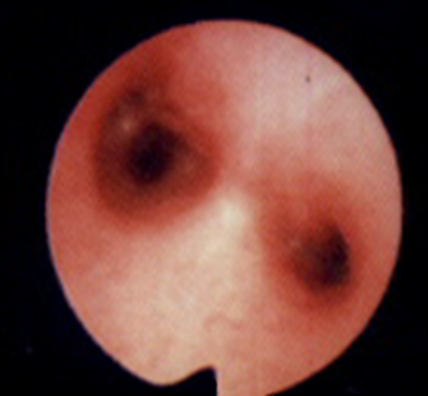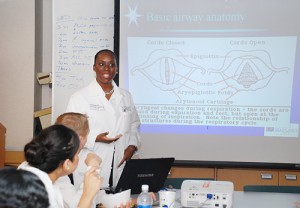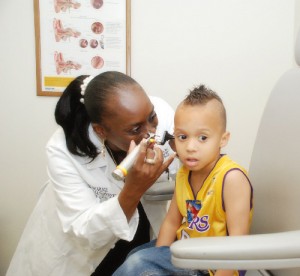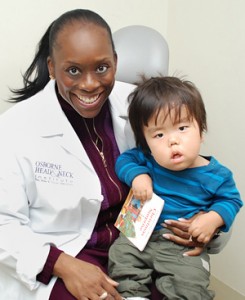- Ear, Nose and Throat Care for Your Child #3: Foreign Body Aspiration: The Nuts and Beans - January 3, 2011
- Ear, Nose, and Throat Care for Your Child #2: How to Protect Yourself During the Cold and Flu Season - January 3, 2011
- Ear, nose, and Throat Care for Your Child #1: Q-tip or Not to Q-tip - November 8, 2010
- Cedars Sinai Medical Center Pediatric Lecture - July 6, 2010
It’s every parent’s worst nightmare: rushing your child to the emergency room. How about when it’s something preventable, like an accidental choking episode caused by a foreign body (food or non-food substance), it can be hard to cope with. As with anything, an ounce of prevention is worth a pound of cure. And the best way to prevent it, is to understand the process better.
What is aspiration?
Aspiration is the inhalation of a liquid or solid into the windpipe (trachea) and/or into the lower bronchi of the lungs. When liquids are aspirated, most commonly it is vomit or saliva. People are familiar with this feeling as something “going down the wrong pipe” when they are speaking and drinking at the same time and begin to choke.
 The solid objects are usually food but can be other items, such as beads, coins, or other things that people, especially children, put in their mouths. These objects most commonly lodge on the right side in the right mainstem bronchus.
The solid objects are usually food but can be other items, such as beads, coins, or other things that people, especially children, put in their mouths. These objects most commonly lodge on the right side in the right mainstem bronchus.
Which foods are most likely to cause it?
In the United States, peanuts and other nuts are the prime offenders. Seeds, beans, grapes, vegetable pieces (e.g. carrots), hot dogs and hard candy are among the foods that are commonly retrieved from the airway. However, this is most likely because these are the more common foods to be found in an American child’s diet. In other cultures, other similarly-sized foods can cause the same problem.
Other solid objects, such as small toys, pins, coins, watch batteries and instruments from around the house (i.e, screws) are common culprits.
Why is this so dangerous?
While the aspirated object itself may cause obstruction, what is most important is the size and texture of the item and what happens to it after it absorbs fluid. Lungs naturally contain some fluid that may be absorbed by the aspirated item and expand, which can be fatal in children. More commonly, smaller particles lodge and cause near-total obstruction. Once removed, if done quickly, there may be little or no permanent sequelae.
Why are kids more susceptible?
Choking is the fourth leading cause of accidental injury in children, with the incidence of death highest among children ages 4 and under. While aspirations happen in all age groups, children under the age of four are the most susceptible, mainly because of their tendency to put objects in their mouths. In addition, they chew differently because they lack well developed molars, meaning food particles may be slightly larger than in adults and older children and therefore any action – a scare, cry, cough, laugh, or a quick change in movement – may trigger a reflex inhalation and a choking episode
How is it diagnosed?
Any witnessed aspiration event or history of choking should warrant at least a call to your pediatrician or a visit to the closest emergency room.
What does this look like? Often, the parent will see some or all of the following signs:
- a sudden onset of coughing
- vomiting
- hands against the neck
- a change in color to blue (cyanosis)
- a change in the child’s normal behavior
- loss of voice
- fainting
- loss of consciousness
The most significant part of the history is the witnessed episode of choking. This should alert the parent to look for other signs. If the child is not brought to medical attention for some time, later signs develop, including:
- fever
- decreased appetite
- continued voice loss
- wheezing, bronchitis, or pneumonia
While most of the foods and particles aspirated are not usually seen on an X-ray, your doctor may get one to look for other signs of foreign body aspiration such as an overinflated or collapsed lung.
How is it treated?
Any suspected foreign body aspiration warrants an evaluation by an Ear, Nose, & Throat specialist (otolaryngologist)
Removal of the foreign body is performed by rigid bronchoscopy. This procedure involves placing an endoscope down the windpipe to explore for a foreign body and remove it at the same time. General anesthesia is usually required in children for safe removal.

The inflammation that results from the food or vomit in the airway may lead to an infection such as bronchitis that may need intensive care admission or other medical treatments.
What can I do to prevent it?
- Avoid feeding nuts and grapes to children under the age of 4 years.
- Do not allow your children under any circumstance to play with uncooked beans. If aspirated they can swell in the airway, up to 2-3 times their original size, and completely obstruct the child’s windpipe, making removal difficult.
- Try to avoid combining any other activity with feeding for kids under the age of 4 years.
- Avoid toys with small removal parts.
- Trust your instinct. If you believe something has happened to your child, seek and insist on prompt medical attention.
What are the complications of Foreign Body Aspiration (Choking)?
Delay in diagnosis and treatment may lead swelling of the airways and inflammation resulting in recurrent bronchitis and/or pneumonia. Failure to diagnose and treat promptly may be fatal.
A message from Dr. Lorraine M. Smith, Director of the Division of Pediatric Otolaryngology at the Osborne Head and Neck Institute:
“As a Pediatric Otolaryngologist, I have removed multiple objects from the airways of infants and children. Almost all cases are unintentional accidents that primarily occur during regular feeding associated with some type of activity – talking, running, jumping, playing and the occasional cough. Remember the old adages from your parents: ‘Don’t speak with your mouth full’ and ‘No playing while you eat’. Remember to trust your parental instinct as this can go a long way to keeping your little ones safe.”
To learn more about Dr. Lorraine Smith and Pediatric ENT care, visit: http://www.ohni.org/



